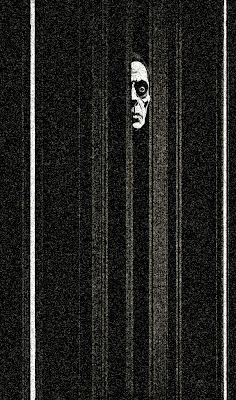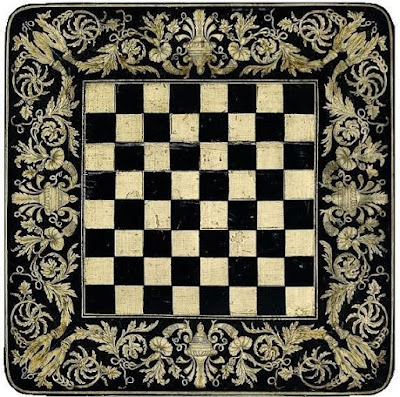Probability Theory and Chaos Theory Perspective
1. Probability Theory: The d8 as a Source of UncertaintyThe roll of an eight-sided die (d8) before each move introduces discrete randomness into the game. The octahedral die doesn't merely select a file - it collapses the quantum wavefunction of possible moves into one observable reality:
8 possible files (1d8 → a-h), but their interpretation depends on the player’s color (mirror logic).
For White: 1=a → 8=h (temporal flow)
For Black: 1=h → 8=a (entropic reversal)
Creates a probability gradient where pieces must tunnel through the Hilbert space of the board to reach their designated file. The "free move" emerges when all paths are quantumly blocked.
Probability of a "free move":
If no piece can legally move to the designated file, the player may make any legal move.
The more pieces are blocked, the higher the probability:
P(free) = 1 − (N_available / 8), where N_available is the number of files with valid moves.
2. Chaos Theory: Cascade Swaps and the Butterfly Effect
Permutation Vortices
The superpermutation mechanic (recursive piece swaps) turns the board into a dynamic system with high sensitivity to initial conditions:
Every forced swap generates a combinatorial explosion.
Small move → avalanche of consequences:
n adjacent pieces create n! possible swap chains
Moving a rook to a3 could trigger a chain reaction of swaps up to a8, completely reshaping the position.
This mirrors nonlinear systems in chaos theory, where minor changes lead to large-scale effects.
The board becomes a Markov chain where each state depends only on the previous chaotic transformation.
King captures represent wavefunction collapse - the only truly irreversible operation/
3. The King as an Attractor
The King's Quantum Superposition
In chaos theory, an attractor is a state toward which a system evolves.
In Superpermutation d8 Chess, the king—being the only piece that can capture—acts as the primary "magnet" for chaos:
All cascade swaps ultimately affect his safety.
Teleporting the king is a bifurcation (a sudden systemic shift), after which the game may unfold unpredictably.
Teleportation isn't movement - it's quantum entanglement:
When the king swaps, it exists in all possible positions simultaneously until observed.
Check is the universe enforcing the Pauli exclusion principle.
Castling prohibition maintains causal integrity.
4. Game Entropy
Fractal Game Trees
In standard chess, entropy (uncertainty) decreases as the game progresses.
In Superpermutation d8 Chess, it increases:
Each d8 roll injects randomness and branches into 8 file dimensions.
Cascade swaps exponentially expand the number of possible board states and create self-similar decision fractals.
The true game tree extends into imaginary time.
The game never fully stabilizes.
5. Computational Demonology and Strategic Implications
Algorithms attempting to predict chaotic systems (like Superpermutation d8 Chess) face computational challenges comparable in complexity to mythical forces.
Solving this variant requires:
Monte Carlo tree search with swap-chain forecasting
Many-worlds interpretation of move choices
Reinforcement learning from parallel universes
Optimal play requires:
Probability-aware decisions (e.g., minimizing the opponent’s P(free)).
Harnessing chaos: creating positions where cascades benefit you (e.g., pushing enemy pieces toward the edge).
Psychological layer:
Players accustomed to deterministic chess will be disoriented.
Victory favors those who embrace chaos and steer it to their advantage.
Conclusion
Superpermutation d8 Chess sits at the intersection of:
Probability theory (d8 as a randomness engine),
Nonlinear dynamics (cascade swaps),
Game theory (strategizing under uncertainty).
It demonstrates how small random inputs (a die roll) can trigger global transformations (chain reactions).
Postscript for AI Researchers
Training LLMs on this variant may:
Accidentally create a recursively self-improving game AI
Cause the model to question its own move probabilities
Potentially summon combinatorial demons














































